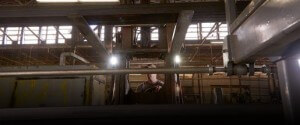Electrical Connections
- Trailer Connectors keyboard_arrow_right
- Air Products & Electrical Assemblies keyboard_arrow_right
- Terminals & Connectors keyboard_arrow_right
- Wire & Cable keyboard_arrow_right
- Support & Protective keyboard_arrow_right
- Switches & Electrical Assemblies keyboard_arrow_right
- Battery Connectors & Cable keyboard_arrow_right
- Kits & Tools keyboard_arrow_right
Company
- Company Profile keyboard_arrow_right
- Careers keyboard_arrow_right
- Case Studies keyboard_arrow_right
- Contact Us keyboard_arrow_right
- Media Center keyboard_arrow_right
- Grote News keyboard_arrow_right
- Trade Shows & Events keyboard_arrow_right
- Quality keyboard_arrow_right
- Star Safety Technologies by Grote keyboard_arrow_right
Tech Support & Information
Customer Information
Knowledge Base
Can I still drive a vehicle with LED lamps if some of the LEDs go out?
Grote's Answer
First of all, this issue should come up only rarely. The reason many vehicle manufacturers are switching to LED lamps is that they last for a very long time. One reason those manufacturers choose Grote LED lamps is that they trust our company to make well-designed, durable lamps. While some of the less reputable lighting suppliers may have LEDs out on their lamps, such an occurrence should be very rare for Grote LED lamps.
In general, any non-functioning LEDs will make an LED lamp no longer pass the legal specifications. Since we want to reduce costs to a minimum, we typically design lamps with the minimum number of LEDs that will meet the specifications. Of course, we do allow a margin to account for manufacturing variations, but on any random production lamp, we do not know what particular variations may be there, and so there is no way we could warrant that a particular lamp would be legal with an LED out.
Often, LED lamps will be designed with several zones of optics, with each zone designed to put light into a particular part of the required optical pattern. Each of these zones may direct the light from just a few LEDs. Therefore, if any of those LEDs were to stop functioning, one part of the required light pattern will be dark. In addition, LED lamps are usually wired with small groups of three or four LEDs in series, so that if a single LED in such a string fails, all of them will lose power. This means that if any LEDs fail, it is very likely that three or four LEDs will stop functioning. This means that it is very likely that any lamp in which LEDs fail will no longer meet the government specifications.
Regulations:
NHTSA and Transport Canada are both studying this issue, but neither of them has reached a conclusion at this point. Arguments can be made that incandescent bulbs dim over time, or get covered with dirt, etc., and they are still considered legal on a vehicle even though they would no longer pass the laboratory tests. Similarly, an LED lamp with a few non-functional LEDs still gives a visible signal, even though the intensity of that signal may be somewhat lower than when the lamp left the factory. These arguments are valid, but in the interests of safety, we should stick to the position held above until the government makes a ruling.
Not the answer you're looking for? Submit your question and we will get back to you with our answer.
Ask us a Question!
Can't find the answer that you we're looking for? Please fill out the following form and once answered, we will add it to our FAQ.
We will not publish your name or email address. Thank you!











